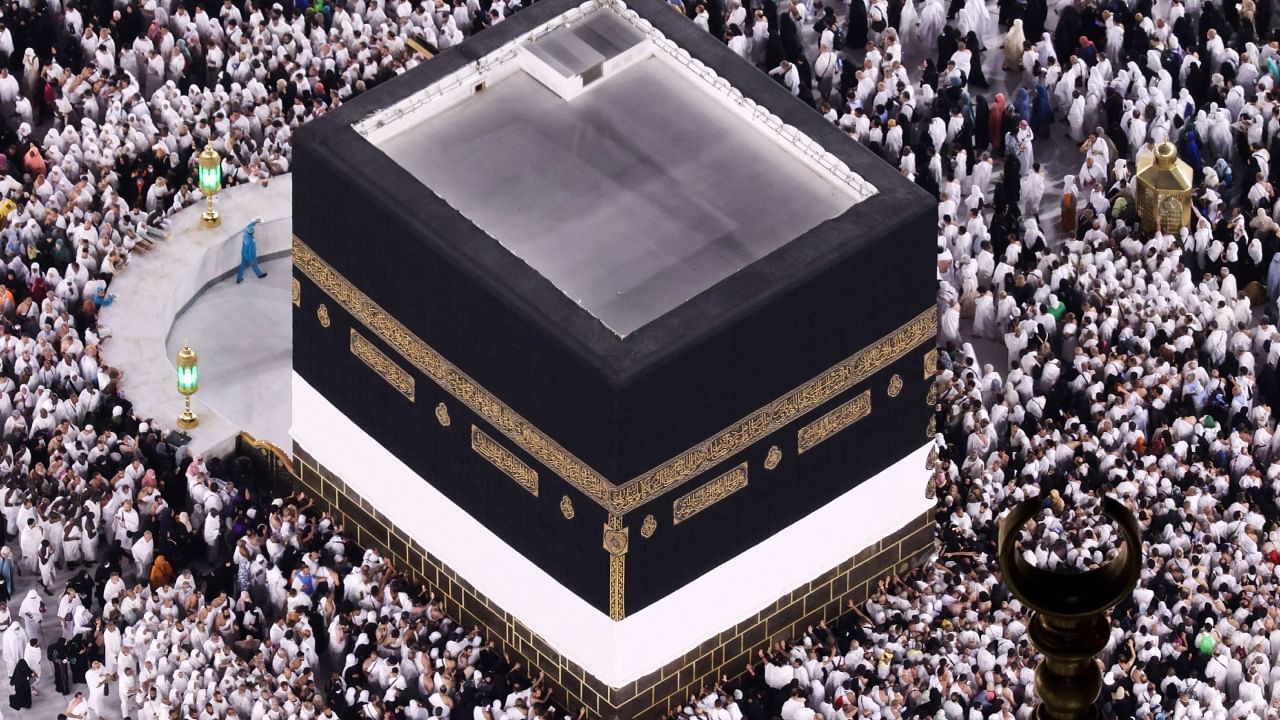
Palestinian pilgrim Abu Anas Abu Rahal was hoping to find cheaper lodgings for a week-long stay in Islam's holiest sites in Saudi Arabia, as the minimum cost for the haj pilgrimage climbed to 26,000 riyals ($7,000) this year. His options were limited.
The 65-year-old struggled to pay the bill despite choosing the cheapest-offered package, which included travelling to Saudi Arabia by land and sharing hotel rooms with other pilgrims.
"I was asking for a fourth option, with a farther hotel which could be half cheaper. The prices and the choices that have been given are embarrassing to be honest," Abu Rahal said, adding that pilgrims last year paid the same price for a package that included flights.
"For the sake of the holy mosque and seeing the Kaaba... everything is worth it, but the economic conditions are really tough," he added.
Abu Rahal was one of more than 2 million haj pilgrims expected to attend the 2023 pilgrimage season this week in Mecca and Medina, defying global inflation and higher prices for haj services.
Authorities in the kingdom said more than 1.6 million pilgrims had already arrived for the pilgrimage as of Sunday. The gathering officially starts on Tuesday.
Haj, a once-in-a-lifetime duty for every able-bodied Muslim who can afford it, is a major source of income for the Saudi government from worshippers' lodging, transport, fees and gifts.
The kingdom earned about $12 billion annually from the 2.6 million pilgrims that used to visit Mecca and Medina for haj, and another 19 million visitors for the umrah, according to official data for 2019, or the last year before the pandemic hit the global travel industry.
Umrah is another form of pilgrimage which can be carried out at any time of the year.
Vast crowds of men wrapped in white and women mostly in black circled the Kaaba in Mecca's Holy Mosque as security officers walked among pilgrims, watching closely the ritual.
Green barriers were set outside the mosque to direct the crowds and prevent stampedes that killed hundreds in the past.
Many pilgrims said they were happy to take the spiritual journey and buy gifts for their family members despite high prices.
"Even if I had to sell everything to come (to haj), I would have done it... I have been trying for three years already," said Alameer Eid Al-Omar, a 52-year-old pilgrim from Egypt.
Such devotion provides business for the merchants of Mecca.
"The demand for prayer beads is way higher than in the previous years, including before the pandemic," said shop manager Abdullah Abbas.
"All nationalities buy beads," he added.